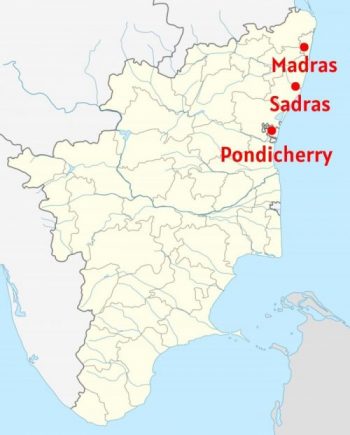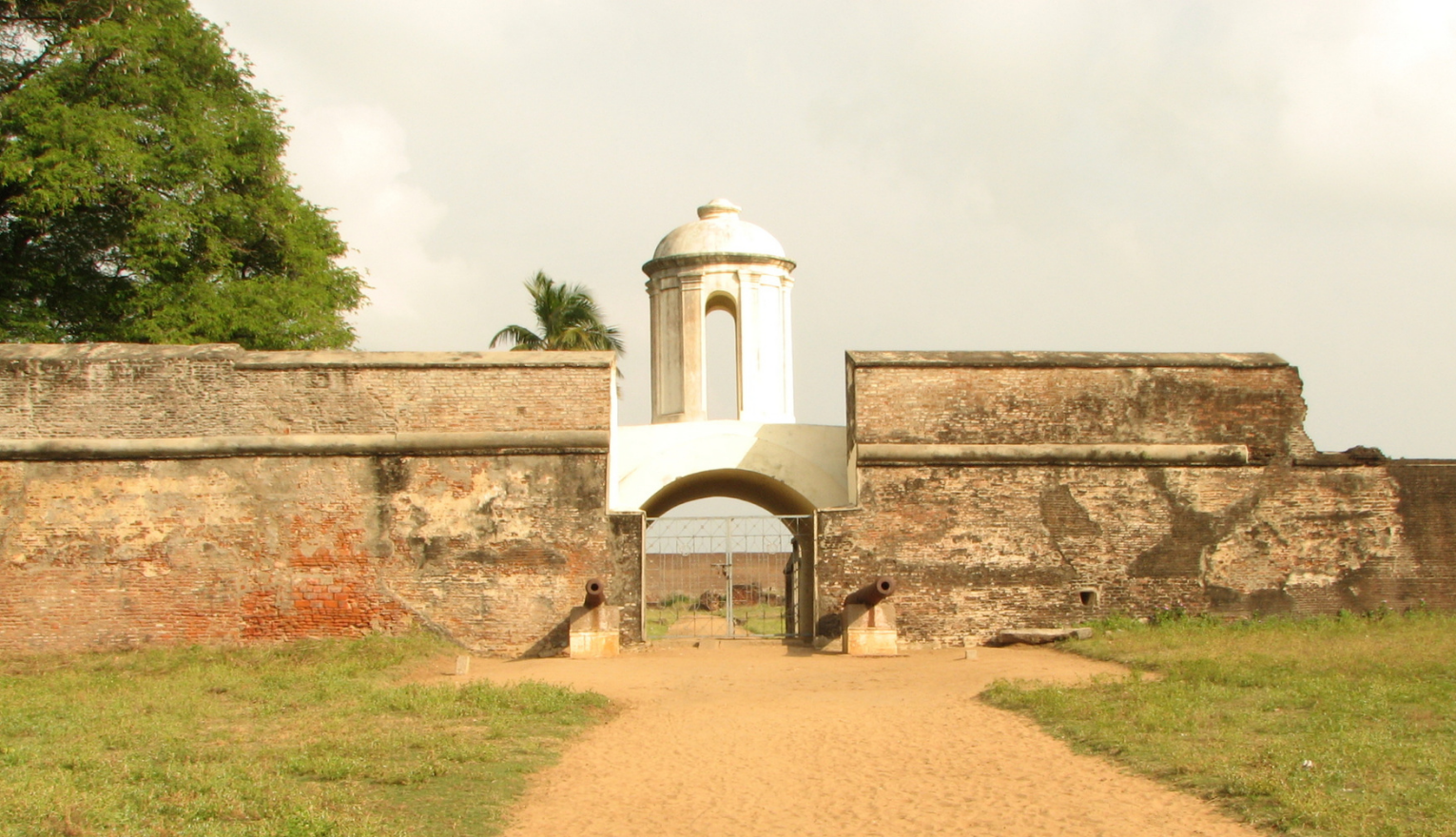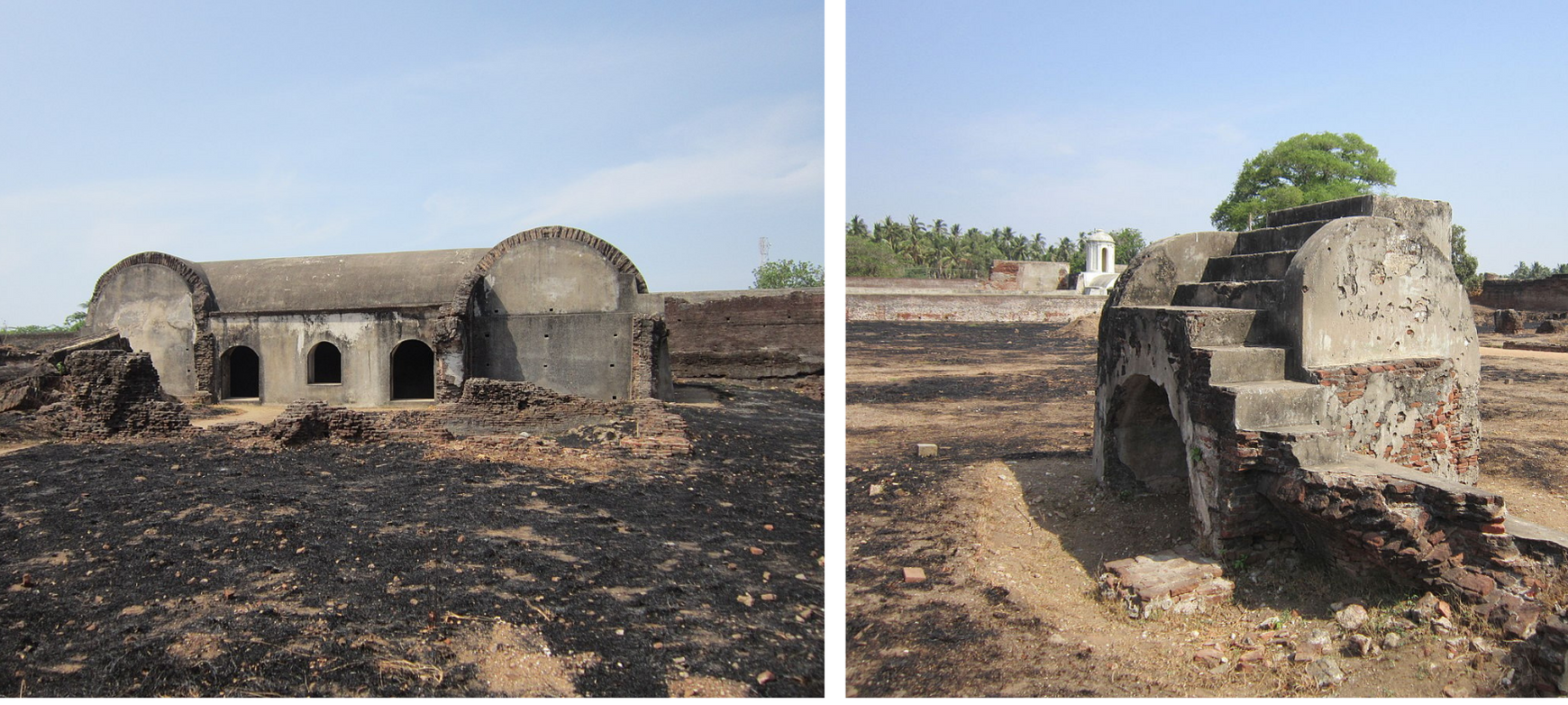Every Chennai-ite knows that MADRAS was the old name of Chennai; but where on earth is ‘SADRAS’? And what is its claim to fame? The best way to reach Sadras, is to get lost on your way from Chennai to Mahabalipuram or Pondicherry. That’s how obscure the town is today! But 300 years ago, it was a very different place.
Sadras is midway between Madras and Pondicherry on the very same coast. In the 17th and 18th centuries its claim to fame was precisely that – it was a Dutch colony, smack in the middle of a prosperous trade zone between British Madras and French Pondicherry.

The story of Fort Sadras began about 111 km to its north, on the shores of Pulicat lake. Here, in 1606 a Dutch Ship drifted in from the sea, and got stuck on the shores of Karimanal village. The sailors were tired and thirsty. A request for water advanced into a trade deal between the Dutch and the Vijayanagara Empire. But they were not the first foreigners on India’s south eastern Coromandel Coast. The Portuguese had arrived here almost a 100 years earlier in 1502 and built a trading outpost. They were not very happy about the new competition. The Dutch eventually managed to push them out of Pulicat and established a colony.
By 1612 the Dutch had expanded their territory to Sadras. The town was an established weaver’s colony, known for producing high quality cotton. There was also a good deal of trade in pearls, edible oil and bricks. Seeing a business opportunity, the Dutch laid claim to it by building a fort and renaming it Sadras. It was called Sadurangapattinam then. That name was quite a mouthful for even the locals, who had shortened it to Sadirai. That too was tough on the Dutch tongue, and they called it Sadras! By 1654 the fort enclosed a large muslin factory. But the elaborate fortifications were completed only in 1749, almost 100 years from when they began. The fort and the booming business inside it, became the envy of other colonisers including the British up north in Madras, and the French down south in Pondicherry. Things were heating up. War from continents away, was riding towards India.
The American Revolutionary War, fought between 1775 and 1783 saw the British and the French on opposite sides. Since your enemy’s’ friend is your enemy, the British declared war on the Dutch as well, because they refused to stop trading with the French. Using the same excuse, the British East India Company had gone on to capture French and Dutch outposts on the Coromandel Coast. The French navy was sent post haste to sort things out. As a result, on February 17th, 1782, the Battle of Sadras was fought. British and French fleets met in the sea before Sadras Fort to fight a battle that lasted for three hours. No one won. But the British had taken the bigger beating and returned to Madras empty-handed. Sadras Fort however, was not forgotten. Finally, in 1818, the British raided the fort and destroyed it.
[Detour: How did the mighty Dutch lose out in India? Read this story about the battle of Colachel that turned the tide against them ]
What remains of Sadras Fort today are its ruins. Broken, chipped structures of elephant mounts, grand dining halls, cannons and granaries, lie scattered in the compound, buried deeper everyday under the sand that blows in from the beach. The fort is an ASI (Archaeological Society of India) protected monument, but is not on the regular tourist map. What has survived best, is the Dutch Cemetery with beautifully engraved Dutch graves of men and women buried here, far from home. Local legends, talk ominously of the ghost of the noisy Dutchman lurking inside a fort well. Occasionally it attracts Dutch visitors trying to understand their past.


Imagine the place as it must have been 400 years ago. A bustling, well-manned fort, overlooking a bay criss-crossed with ships traveling across the world, carrying muslin from Sadras. Today, Sadras is reduced to a tiny, obscure fishing community and a beach lined with brightly painted fishing boats. It is truly a piece of history forgotten in plain sight.
Postscript: The Dutch turned over all Indian colonies to the British in 1825, but evacuated this fort only around 1854. Thereafter, only the British and the French colonies remained on this coast.
[Detour: Here’s another interesting story on Anglo-French rivalry in this part of India – The Adopted patriot of Pondicherry ]
To hear other tales from the annals of history, join us on one of our walking tours.
You can also download the Storytrails App and discover a city all by yourself through our location aware Audio Tours.
Archives
- January 2022
- December 2021
- November 2021
- August 2021
- March 2021
- February 2021
- January 2021
- December 2020
- November 2020
- October 2020
- September 2020
- August 2020
- April 2020
- March 2020
- February 2020
- January 2020
- November 2019
- October 2019
- September 2019
- August 2019
- July 2019
- June 2019
- August 2017
- February 2017
- January 2017
- October 2013
Featured Posts
- Tales that pots tell: Keeladi excavations AUGUST 18, 2021
- The Last Grand Nawab: Wallajah FEBRUARY 10, 2021
- How Tej Singh became Raja Desingu of Gingee FEBRUARY 5, 2021
- How Shahjahan seized the Mughal throne JANUARY 28, 2021
- Alai Darwaza – Qutub Minar Complex, Delhi NOVEMBER 21, 2020
- Marking History through British buildings NOVEMBER 17, 2020
- The last great queen of Travancore NOVEMBER 7, 2020
- Brahmi and the evolution of scripts OCTOBER 15, 2020
- The Cambodian King of Kanchipuram OCTOBER 14, 2020
- James Prinsep – the man who read the writing on the wall OCTOBER 10, 2020
- Mariamman – the Village Goddess who travelled SEPTEMBER 30, 2020
- Misnamed Monuments of Mamallapuram SEPTEMBER 28, 2020








